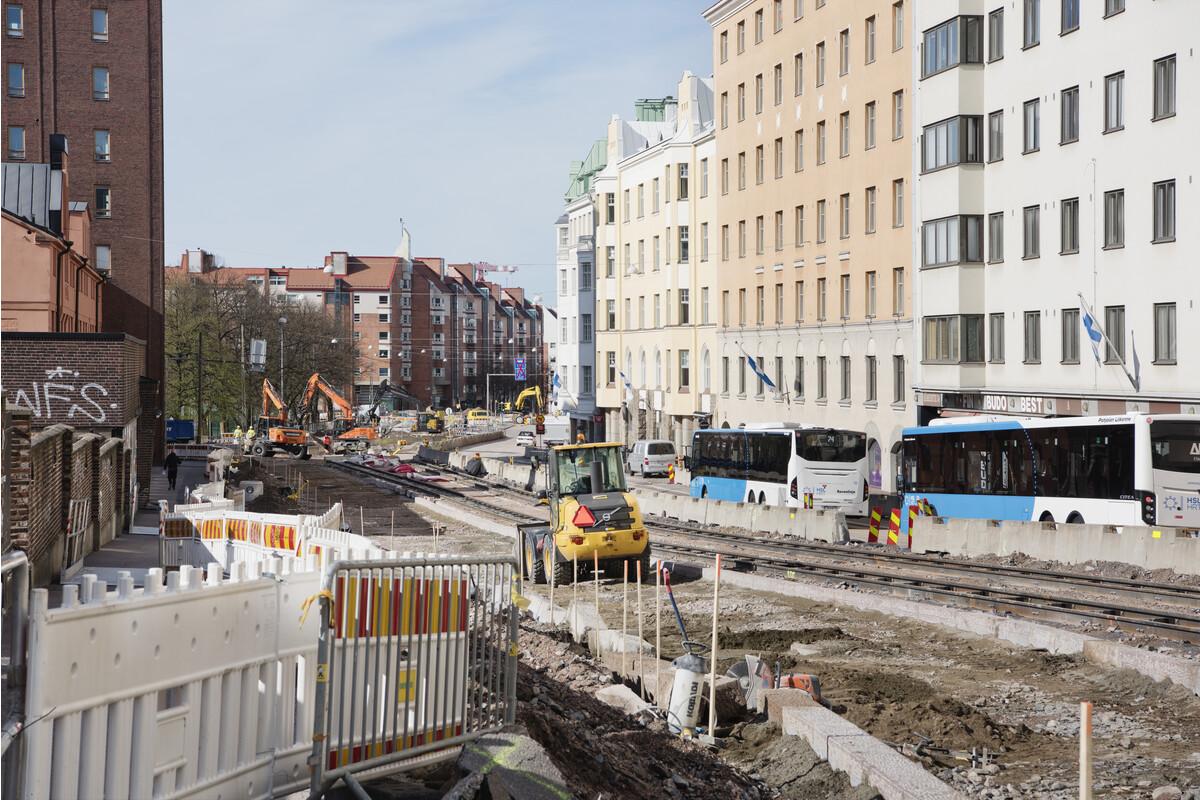European cities accelerate the implementation of zero-emission construction sites

The City of Helsinki is striving for zero-emission construction sites and is now also part of a European declaration of intent to accelerate the process.
The declaration of intent was drafted as part of the European Commission’s Big Buyers for Climate and Environment collaborative initiative. This includes public procurement units aiming to reduce emissions from construction sites and in particular to accelerate the use of zero-emission construction equipment.
The procurement units are setting the following targets:
- Require fossil-free construction machinery in own public projects from 2025, with at least 20% emissionfree machinery, where available.
- Require fossil-free construction machinery in own public projects from 2030, with at least 50% emissionfree machinery, where available.
The declaration was announced by the cities of Helsinki, Oslo, Copenhagen, Vantaa and Barcelona. The declaration of intent now signed is virtually identical to the national green deal agreement for zero-emission construction sites.
National green deal agreement targets rapidly becoming more stringent
As far back as September 2020, Helsinki signed the green deal agreement together with the Ministry of the Environment and the cities of Espoo, Vantaa and Turku, HSY and Senate Properties. The agreement will greatly reduce emissions from construction site equipment, electricity and heating by 2030. Later, Kaupunkiliikenne Oy and the Finnish Transport Infrastructure Agency also signed up to the agreement.
So far, Helsinki has made progress in meeting the targeted timetable of the agreement. However, the mid-term targets in particular call for more robust action even at this early stage. According to the green deal agreement and the declaration of intent now signed, contracts beginning after 2025 must be 100% fossil-free, with a further 20% of machinery and transport equipment running on electricity, hydrogen or biogas.
This is a very ambitious target in a Finnish market where there are still very few fully emission-free alternatives available. For the time being, low emissions on construction sites are mainly being achieved through renewable diesel, equipment emission classes and zero-emission site electricity and heating. However, the use of renewable diesel is seen as only an interim solution as the aim is to achieve zero emissions.
Helsinki already has some small electric machines on site, but lacks experience in using large electric machines and building the infrastructure related to their use. Promoting the availability of electric machinery, for example through various piloting and financing options, is already essential at this stage if Helsinki is to credibly aspire to the goals that lie ahead in the next few years.
European collaboration aims to influence the market
In addition to national cooperation and market dialogues, European collaboration is being sought to stimulate market change. In the Big Buyers group, European public procurement bodies from different backgrounds are aiming to promote the market for zero-emission construction site machinery. The group includes both advanced and early-stage procurement units.
For Helsinki, the examples of pioneering cities such as Oslo and Copenhagen have been particularly valuable. Recently, we have learned how to organise charging on a fully electric construction site, how to smooth out electricity consumption peaks and how to use different financing channels in neighbouring countries to cover the investment costs of zero-emission machinery.
Joint market dialogues with European cities are creating wider demand and, at the same time, the opportunity to discuss with market players outside Finland. Market influence, such as the declaration of intent now announced, is important, as there is currently no EU-level regulation of CO2 emissions from construction site machinery.
Read more: